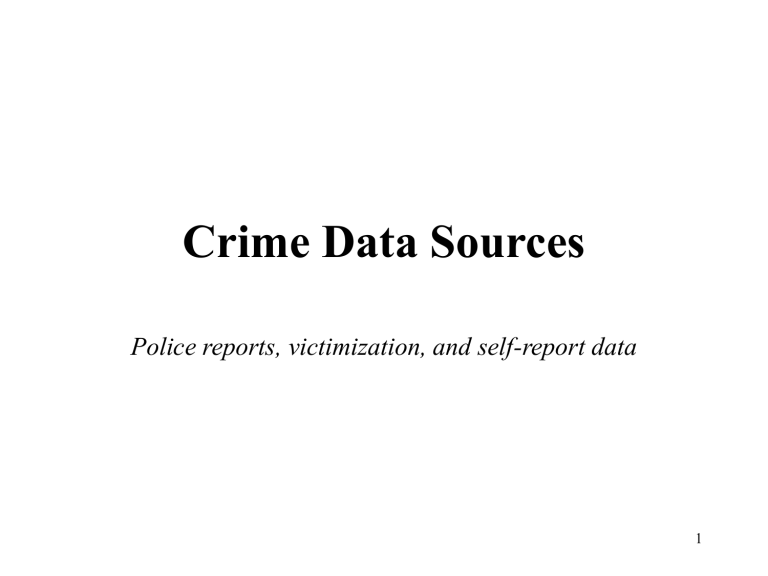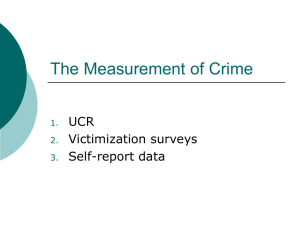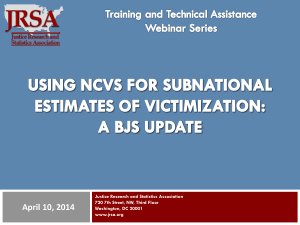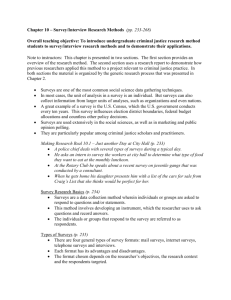Production of Crime Statistics

Crime Data Sources
Police reports, victimization, and self-report data
1
Sellin’s Dictum
“The value of a crime for index purposes decreases as the distance from the crime itself in terms of procedure increases”
Thorsten Sellin, 1931
2
Sources of Crime Statistics
• Uniform Crime Reports (UCR)
• National Crime Victimization Surveys
(NCVS)
• Self-Report Data (SRD)
3
Uniform Crime Reports
Part 1 Offenses
• “Serious illegal acts that occur with sufficient frequency to provide an adequate basis for comparison”
4
Crimes Not Included in the
UCR Part 1 Crime Index
Reason: they do not come to the attention of police often enough.
5
Becoming a UCR Crime Statistic
•
Step 1 :
•
Step 2 :
Police must decide…
•
Step 3 :
•
Step 4 :
6
Reporting Crimes to the Police
• People are MORE likely to report if…
• People are LESS likely to report if…
7
Officer Discretion
•
Officer discretion influenced by offense and offender characteristics
8
Recording of Crimes by Police
• Characteristics of the offense
• Characteristics of offender
• Characteristics of the victim
9
Strengths of the UCR
• National
• Permits comparisons
• Links to other sources
10
Weaknesses of the UCR
• Street crimes
• Reactive crime reporting by citizens
• Officer discretion
• Susceptible to political pressure to over or under-report
11
The National Crime Victimization
Survey (NCVS)
• Conducted by the U.S. Bureau of Census every 6 months, households remain up to 3 years
12
Self-Report Data
• Unofficial statistics
• Gets at the “dark figure” of crime
• Provides information on causes of crime from offender’s perspective
13
Ethical Issues in Self-Report
Studies of Violent Crime
• Exchange confidentiality for honesty
• Ask subjects not to talk about planned violence
14







